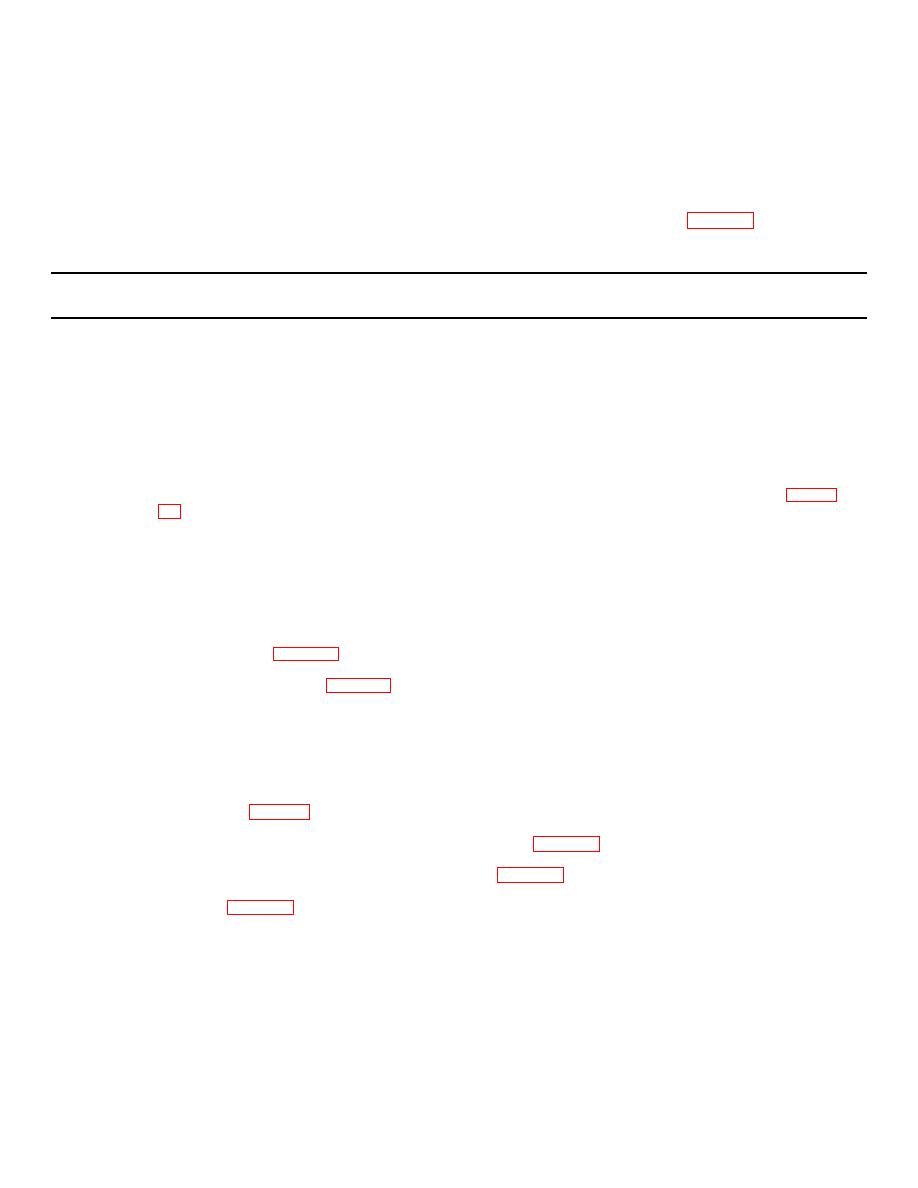
| Tweet |

Custom Search
|
|

|
||
 TM 55-1925-204-12
c. This manual cannot list all malfunctions that
and its components. Each malfunction for an individual
component, unit, or system is followed by a list of test or
may occur, nor all tests or inspections and corrective
actions. If a malfunction is not listed, or is not corrected
inspections which will help you to determine probable
causes and corrective actions to take. You should
by the listed corrective actions, notify your supervisor.
perform the tests/inspections and corrective actions in
the order listed.
3-4. Troubleshooting
Probable malfunctions, with tests and inspections, and
corrective actions are listed in table 3-3 below.
Table 3-3. Troubleshooting.
MALFUNCTION
TEST OR INSPECTION
CORRECTIVE ACTION
NOTE
Before you use this table, be sure you have performed all applicable operating checks.
01 GROUP-PROPULSION ENGINE
1. ENGINE STOPS SUDDENLY OR STALLS FREQUENTLY.
Step 1. Check for sufficient fuel.
See that there is fuel in day tank and that shutoff valves are open.
Step 2. Check that fuel system is primed.
Unscrew vent at injector, revolve engine on air and see if fuel is flowing. If noL, prime the fuel system (para 3-
Step 3. Check for dirty fuel.
Clean the fuel filters and the entire fuel oilsystem.
Step 4 Check for water in fuel.
Drain and clean the entire fuel oil system, (including the day tank) fill with clean fuel, then proceed with
regular priming and starting procedure.
Step 5. Check for plugged fuel line.
Check fuel supply lines for any obstructions.
Step 6. Check for dirty or choked fuel oil filters.
Service the filters (para 3-14).
Step 7. Check that fuel injection pumps are primed.
Prime the injection pumps (para 3-10).
Step 8. Check that governor is not stuck.
Remove all binds from governor and fuel injection pumps linkage mechanism.
Step 9. Check that fuel oil lines are not loose at the injectors.
Tighten all fuel lines.
2. LOSS OF POWER
Step 1. Check for broken or worn compression rings.
Replace rings (para 3-7).
Step 2. Check for low scavenging air pressure.
Clean scavenging air pump intake, and check piping system (para 3-16).
Step 3. Check for low lubricating oil pressure.
Examine the lubricating oil pump and repair or replace (para 3-22).
Step 4. Check fuel injector tips for carbon.
Clean tips (para 3-12).
3-10 Change 1
|
||
 |
||